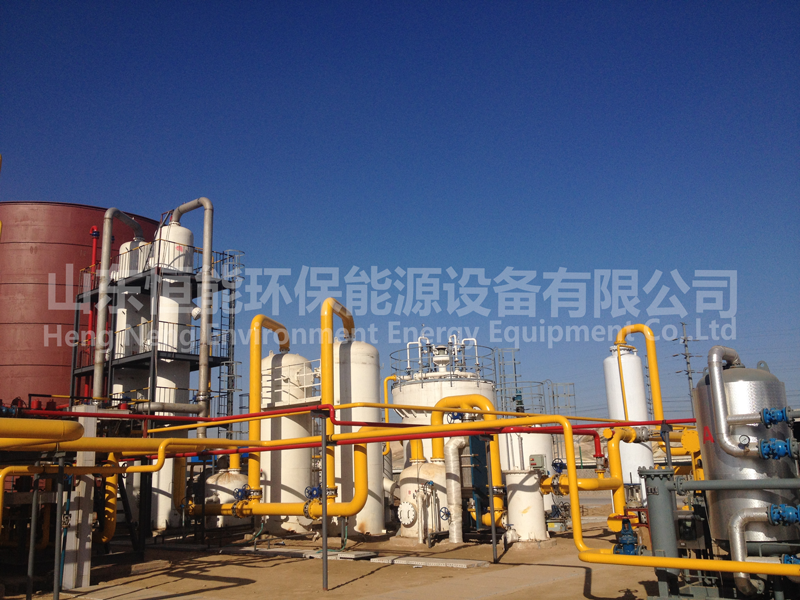歡迎進入betway开户网站
歡迎進入betway开户网站
沼氣提純的四種方法你知道是什麽(me) 嗎?
 首頁- betway体育入口 > 公司新聞
首頁- betway体育入口 > 公司新聞
 2025-04-27
2025-04-27
沼氣提純有四種方法,即吸收法、變壓吸附法、低溫冷凝法和膜分離法。
There are four methods for purifying biogas, namely absorption method, pressure swing adsorption method, low-temperature condensation method, and membrane separation method.
吸收法:吸收淨化過程是利用有機胺溶液(一級胺、二級胺、三級胺、空間位阻胺等)和二氧化碳的物理和化學吸收財產(chan) ,即在吸收塔中的壓力和常溫下與(yu) 沼氣中的二氧化碳發生吸收反應來實現的,並且吸收液在再生塔中在壓力和加熱條件下進行反分析反應以釋放高純度二氧化碳氣體(ti) 。同時,富液再生具有重新吸收二氧化碳的能力,以實現吸收塔中甲烷的連續脫碳和淨化,並使脫碳液進行連續吸收和再生循環。
Absorption method: The absorption purification process utilizes organic amine solutions (primary amines, secondary amines, tertiary amines, steric hindrance amines, etc.) and the physical and chemical absorption properties of carbon dioxide, which undergo absorption reactions with carbon dioxide in biogas at pressure and room temperature in the absorption tower. The absorption solution undergoes back analysis reaction under pressure and heating conditions in the regeneration tower to release high-purity carbon dioxide gas. At the same time, rich liquid regeneration has the ability to reabsorb carbon dioxide to achieve continuous decarbonization and purification of methane in the absorption tower, and to enable continuous absorption and regeneration circulation of decarbonized liquid.
壓力波動吸附淨化法:利用吸附劑(如分子篩等)對二氧化碳的選擇性吸附財產(chan) ,即吸附劑上的二氧化碳比其他氣體(ti) 組分具有更高的分離係數,以達到從(cong) 沼氣中去除二氧化碳的目的。在吸附過程中,原料氣中的二氧化碳在吸附塔中被加壓吸附,甲烷和其他弱吸附氣體(ti) 作為(wei) 淨化氣體(ti) 被釋放。當吸附飽和時,將吸附柱加壓或甚至泵入真空以釋放吸附的二氧化碳。為(wei) 了確保連續的氣體(ti) 處理,PSA需要至少兩(liang) 個(ge) 吸附塔,可以是三個(ge) 、四個(ge) 或更多。
Pressure fluctuation adsorption purification method: using adsorbents (such as molecular sieves) to selectively adsorb carbon dioxide, that is, the carbon dioxide on the adsorbent has a higher separation coefficient than other gas components, in order to remove carbon dioxide from biogas. During the adsorption process, carbon dioxide in the feed gas is pressurized and adsorbed in the adsorption tower, while methane and other weakly adsorbed gases are released as purified gases. When the adsorption is saturated, the adsorption column is pressurized or even pumped into vacuum to release the adsorbed carbon dioxide. To ensure continuous gas treatment, PSA requires at least two adsorption towers, which can be three, four, or more.

低溫冷凝法:低溫冷凝淨化工藝利用二氧化碳冷凝溫度高的特點,通過低溫作用將沼氣中的二氧化碳液化,甲烷組分作為(wei) 不凝氣體(ti) 排出,淨化產(chan) 品氣。為(wei) 了減少運行能耗,通常使用再生技術來恢複剩餘(yu) 的冷卻能力。
Low temperature condensation method: The low-temperature condensation purification process utilizes the high condensation temperature of carbon dioxide to liquefy the carbon dioxide in biogas through low-temperature action, and the methane component is discharged as non condensable gas to purify the product gas. In order to reduce operating energy consumption, regeneration technology is usually used to restore the remaining cooling capacity.
膜分離法:由於(yu) 膜在壓力驅動下的滲透性不同,膜分離和清潔過程通過使用不同的氣體(ti) 組分來實現。通常,二氧化碳的滲透速率快,而甲烷的滲透速率慢,並且以可滲透氣體(ti) 的形式作為(wei) 慢氣體(ti) 獲得純化的產(chan) 物氣體(ti) 。在機械工程中,通常使用多級膜分離工藝來提高甲烷氣體(ti) 的濃度。
Membrane separation method: Due to the different permeability of membranes under pressure, membrane separation and cleaning processes are achieved by using different gas components. Usually, carbon dioxide has a fast permeation rate, while methane has a slow permeation rate and is obtained as a purified product gas in the form of a permeable gas. In mechanical engineering, multi-stage membrane separation processes are commonly used to increase the concentration of methane gas.
目前,沼氣淨化工程主要采用吸附和壓力波動吸附,而低溫冷凝法和膜分離法由於(yu) 技術成熟和經濟性而很少使用。
At present, biogas purification projects mainly use adsorption and pressure fluctuation adsorption, while low-temperature condensation and membrane separation methods are rarely used due to their mature technology and economy.
本文由沼氣提純友情奉獻.更多有關(guan) 的知識請點擊:https://www.echo-vortex.com我們(men) 將會(hui) 對您提出的疑問進行詳細的解答,歡迎您登錄網站留言.
This article is a friendly contribution from biogas purification For more information, please click: https://www.echo-vortex.com We will provide detailed answers to your questions. You are welcome to log in to our website and leave a message